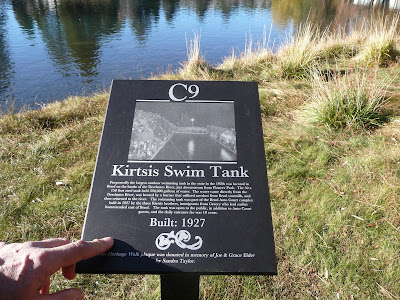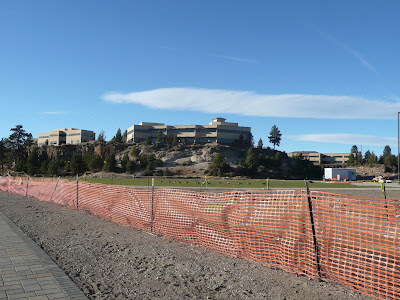
CLick on the icon to join others in there part of the world
.At the entrance to Winchester Bay and at the mouth of the Umpqua River, stands a sentinel of the ocean, casting its red and white beams of light some 20 miles out to sea. The 65-foot tower is situated on a hill 100 feet above sea level surrounded by US Coast Guard buildings and a Museum.
An earlier light structure, the first on the Oregon Coast, was built in 1857 on the south side of the river. It fell into the swollen water seven years later during a storm when the water eroded away the sand.
The current lighthouse was started in 1890 and was illuminated in 1894. It is the sister lighthouse to the one at Heceta Head just a few miles north of Florence. Both structures were built from the same plans. 
We took the tour to see the inside and this is the first time i have ever gone inside a lighthouse, so this was very interesting, our tour guide was very good in telling the story of the light house. There were 3 flights of stairs a total of 68 stairs i think he said

Can you imagine having to climb those on a daily bases?You would never have to worry about getting enough excersie

The Umpqua Light shines through a first order Fresnel lens made of 616 glass prisms handcrafted in France and weighing two tons. It is a beautiful display of fine craftsmanship and produces a spectacular colored light show at dusk.
This is especially true if there is a very light mist in the air. The light rotates out to sea and on the trees behind it on the landward side. The light shines 24 hours a day, but visit after dark or before sunrise, if you possibly can. As you enter Umpqua Lighthouse State Park, down a winding road, the light's rainbow beacon rotates through the tall pines with alternating white, white and red beams. The 65 foot tower is brick covered with white stucco, but you will not be able to take you eyes off this fantastic lens.
The lens assembly was originally turned by a clockwork mechanism much like a grandfather clock, powered by a huge weight which had to be wound up by the lightkeeper every four hours.
This motive power is now performed by an electric motor and monitored by sophisticated equipment, which notifies the Coast Guard station if a malfunction occurs.
The original oil lamp has been replaced with a high powered 1,000 watt electric bulb. A spare bulb is mounted on a panel, which automatically moves it into place should the first one burn out.
In November of 1983 the old chariot wheel mechanism that rotates the light broke down. The Coast Guard promptly installed an airport beacon on the tower and made plans to remove the original lens. Local residents launched a storm of protest until the Coast Guard relented and repaired the rotating apparatus.
The lighthouse was restored by the US Coast Guard and is maintained by them.



























































